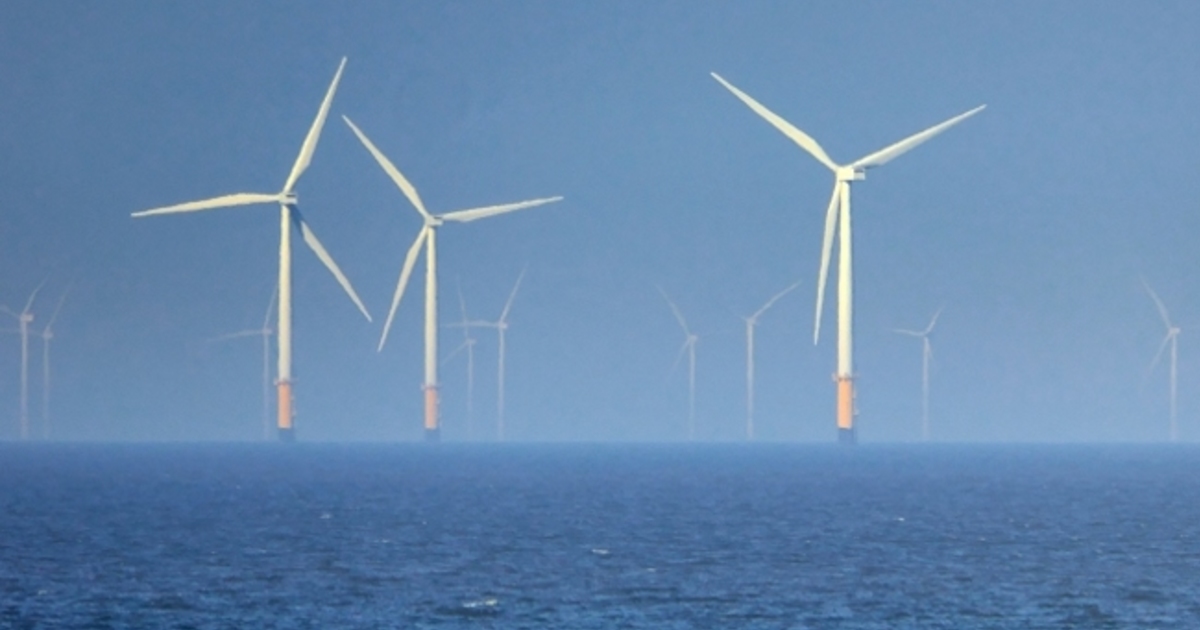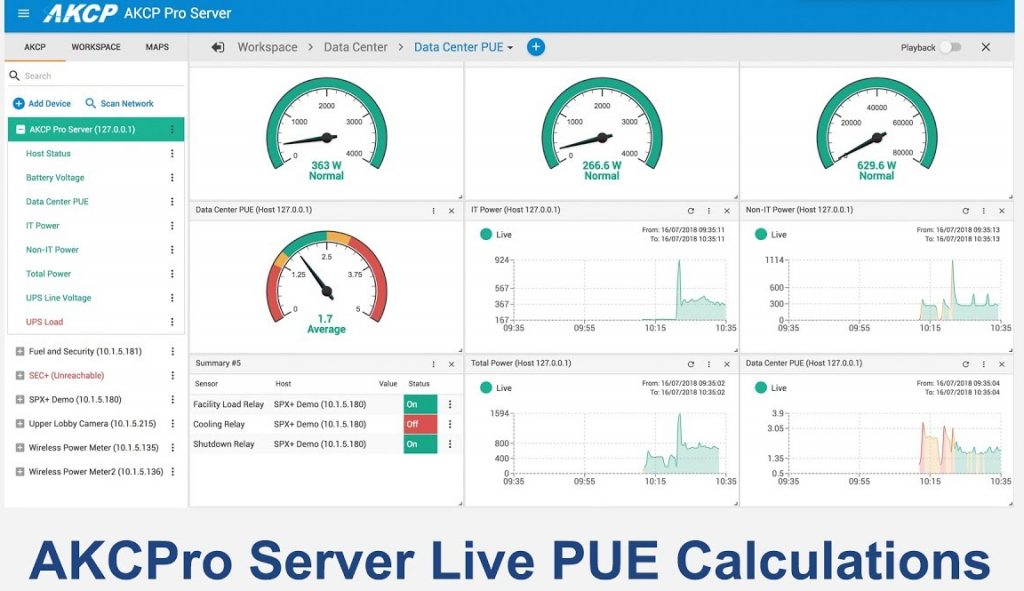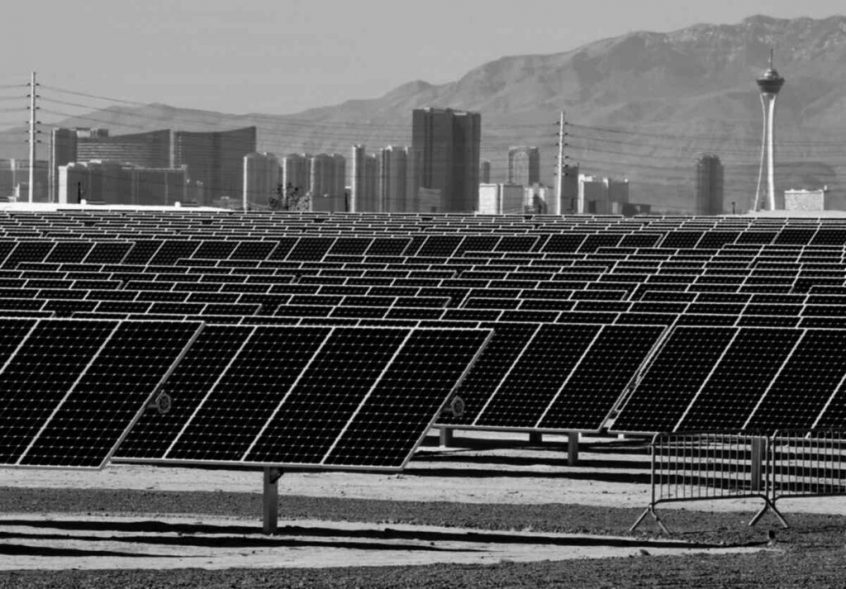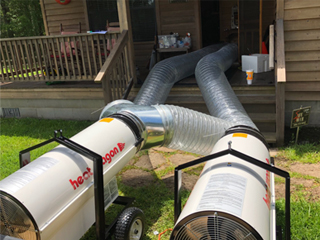The pandemic has raised awareness of data centers’ important role in society, elevating them to the status of public utilities. This is because, as working and educating from home become more common, uninterrupted connectivity outside of office centers has become the norm. This increased demand for cloud services has led to an increase in data center energy use.
Ireland’s Geographical Advantage For Data Center Energy
Because of Ireland’s location on the Atlantic coast, businesses have a unique chance to include wind power into their sustainability strategy. The Earth Policy Institute in the United States has ranked Ireland fourth in the world for wind energy leadership, ahead of the United States, the United Kingdom, and China. And when it comes to data center sustainability, wind energy has been a hot topic.
A number of data center operators and electricity companies have formed collaborations. SSE Renewables and Echelon, for example, have agreed to build a 520MW offshore wind-farm to cover Echelon’s data center power demands. Both Amazon and Facebook have entered into agreements with wind farms in Ireland, with Amazon recently unveiling a new 115-MW wind-farm project in Ardderroo, Co Galway, slated to begin operations in 2022.
While these agreements will help Ireland achieve its goal of constructing more sustainable data centers, they will also help Ireland achieve its decarbonization targets.
Amazon wind farm projects, for example, are expected to add 229MW of renewable energy to Ireland’s grid each year. This may save 366,000 tonnes of CO2 per year and provide enough renewable energy to power 185,000 Irish households each year.
Ireland has the opportunity to set new sustainability norms – both for the data center business and for the country as a whole – thanks to this public-private partnership to invest in renewable wind power.
Data Center Operators Face Scrutiny
According to a forecast by grid operator EirGrid, data centers’ increasing demands on Ireland’s electrical supply are accounting for as much as 29% of consumption by 2028.
To put this in perspective, the research claims that data centers often consume the same amount of energy as a big city. Operators of data centers must focus on decreasing their carbon impact while powering our connected society.
Government Priorities
With its attempts to build a clear framework for decarbonization, the Irish government has placed a strong emphasis on sustainability.
By 2030, the government has promised that renewable energy will provide 70% of the country’s electricity.
By 2030, corporate power purchase agreements (PPA) are expected to account for 15% of Ireland’s renewable electricity demand. Businesses with significant energy use agree to buy power from a renewable provider for a fixed period of time under this program.
The Irish data center industry has already begun to respond to this mandate. Microsoft, for example, teamed up with SSE Airtricity to put solar panels on the roofs of schools across the country. This renewable energy investment is part of a power purchase agreement (PPA) aimed to offset Microsoft’s data center electricity consumption.
According to the blog of journalist Edward Lucey, Ireland is faced with a predicament in which unregulated data center building could cause power disruptions and jeopardize the country’s climate ambitions.
This unstoppable force is the ongoing building of data centers across the country. By the end of the decade, it is predicted to consume up to 30% of Ireland’s electricity.
Ireland’s climate change promise must be upheld, with a 7% decrease in
greenhouse gas emissions required. This entails shutting down fossil-fuel power plants and switching to wind energy.
Data Centers In A Decarbonized Grid

Photo Credit: www.missioncriticalmagazine.com
Marc Garner of Schneider Electric addressed some of the same data points as Lucey did. Data centers, according to Garner, are “important” and might be part of the solution. It assists the grid by onsite generation in microgrids and the sale of their backup power to the grid.
How useful is all of this? Let’s start at the beginning.
Fossil fuels remain the world’s primary source of energy. Social and environmental variables influence energy consumption. While other industries use fossil fuels, developed countries get their energy from a hybrid-electric system that uses both fossil and renewable sources.
The
United Kingdom, for example, has removed coal from its power infrastructure. However, fossil natural gas provides 40% of our electricity. Heating and transportation are virtually entirely powered by fossil fuels. Gas is used to heat our houses, and oil is used to power our automobiles and trucks.
The country has stated that it will
decarbonize by 2050 and reduce emissions by 78% by 2035. It’s unclear whether these objectives are sufficient or whether they can be met with renewable energy.
In that case, we must consider any additional demands on the power grid. Increasing demand will increase the quantity of renewable energy needed, making net-zero more difficult to achieve.
Data centers have a huge profit margin and can afford to pay green tariffs. However, if one sector purchases all of the green electricity, there will be insufficient for everyone else. To combat this, several large-scale hyperscale providers are funding the construction of renewable energy plants. They support the construction of that capacity by purchasing the whole output of proposed wind and solar farms through power purchase agreements.
Operators of data centers will occasionally claim that development in one state or another is ”powered by” a renewable resource that they have paid for. However, the renewable resource is variable, whereas data center demand is constant. The operators were faced with a problem: how to power the data center while the solar farm was not producing.
The Data Center Moratorium

Photo Credit: baxtel.com
As a result, some cities have imposed a temporary or permanent moratorium on data center construction. Singapore and Amsterdam, for example, are excellent examples.
The next flashpoint for this debate is in Ireland. It’s a little country with a big impact. Data centers, in particular, have been a rapidly rising consumption of the region. The
Eirgrid figures show that without data centers, the country’s electricity usage would be flat. With the present rate of data center construction, it will grow extremely quickly.
Other ideas exist, such as Fortress Energy‘s proposal for a liquefied natural gas (LNG) project in Shannon. This might aid in the importation of fracking fossil gas from the United States, as well as the usage of some of the generated energy to power a data center. Despite its evident inconsistency with Irish energy policy, that proposal keeps reappearing. Another CRU suggestion is that every institution provides the ability to self-support. With enough storage or dispatchable generation capacity to meet demand. The word “dispatchable” is the stumbling block here, because renewables aren’t dispatchable, meaning they can’t be turned on and off at will.
And the storage alternative is appealing, as all data centers have enough energy storage to meet at least a few hours of demand. The disadvantage is that the majority of such storage is in the form of
fossil fuels. Datacenter operators are adamant about not sharing it. Any other consumers of that storage, as Marc Garner knows, will have to pry it from the operators’ dead hands.
What About a Cap?
I’m curious whether there’s a method to make a moratorium work and keep it going. What if we said that no new data centers could be built unless an equal amount of capacity could be decommissioned?
That is how the US data center business has kept its power demand low, according to researchers like Koomey and Shehabi. New data centers have been shown to be more efficient than older ones. A lot of less efficient company capacity has been replaced by efficient cloud data centers with economies of scale. As a result, data center power consumption in the United States increased by 6% in the time it took for compute to increase by 550%.
For example, Iceland’s commercial Orca carbon-capture device can extract carbon from the atmosphere. and might be used to offset our flights. However, unless Orca’s technology improves, each tonne of carbon trapped by it costs $1200, which is several times the cost of the energy used to release it.
There would be new ways to value data center capacity if the overall data center energy usage was capped. Ones that provide no direct benefit, such as Bitcoin mines, would have to justify their existence in order to compete for quota with facilities that do.
Those in charge of older, less efficient data centers may find themselves with a stronger incentive to shut them down. Providers who wish to build new, higher-capacity facilities would pay to assist decommission the old ones, freeing up rationed capacity.
There would be obstacles to overcome.
The initial data would be one issue. There is no comprehensive data center census, and lists are prone to error. As the US government discovered throughout its consolidation program, it’s difficult to determine how much capacity is available, and as old facilities close, new ones emerge. This problem could be solved by assigning a time-limited value to old data centers. Or you’ll miss the boat if you don’t find them soon and exchange them in for contemporary capacity.
Each country’s quota would be relatively arbitrary on a global scale. Some African emerging countries may not have enough existing MW of capacity to trade in for their future demands. Multinational operators could be able to free up Wattage rations by updating their well-equipped hubs and trading them for capacity to build additional hubs. Without offsetting cutbacks elsewhere, no additional hubs could be constructed.
A limit on data center construction could resemble a fishing quota. They’d deal with a similar problem. Fishing without limits depletes populations and degrades ecosystems. Smaller economies’ experience, such as Ireland’s, shows that unrestricted data center construction, no matter how green an individual data center may be, is incompatible with stringent decarbonization targets.
AKCPro Server: Central Monitoring Software
AKCPro Server is our world-class central monitoring and management software. Suitable for a wide range of monitoring applications. Free to use for all AKCP devices. Monitor your infrastructure, whether it be a single building or remote sites over a wide geographic area. Integrate third-party devices with, Modbus, SNMP, and ONVIF compatible IP cameras.
Power Monitoring

AKCPro Sever Live PUE Calculation
AKCPro Server is an ideal DCIM solution. Perfect for those people who don’t have the budget or need for complex DCIM software, but require a capable monitoring system for their data center. With many advanced features such as Cabinet Thermal Mapping, Drill Down Mapping, Graphing, VPN connections to remote sites, AKCPro Server is the ideal choice. AKCPro Server is capable of live PUE calculations, so you can see real-time the effect changes you make have on your PUE.
By utilizing the AKCPro Server live PUE calculations you can see the immediate effect that changing your power usage has. Shut down fans and cooling systems and see how it improves your PUE. At the same time, use thermal rack maps to ensure that you are not overheating any servers. Adjusting the thermostat on your CRAC units will undoubtedly result in improved PUE, but what about its knock-on effect on the lifespan of servers?
By employing the complete AKCP ecosystem of products, Thermal Map Sensors, AKCPro Server and Power Meters work together to give a complete analysis and assistance in cutting your power costs and improving your PUE.
Reference Links:
https://www.siliconrepublic.com/enterprise/data-centre-sustainability-ireland
https://cleantechnica.com/2019/09/06/yang-would-spend-us3-trillion-on-residential-solar-but-the-same-money-could-decarbonize-the-grid-entirely
https://www.irishtimes.com/business/technology/why-ireland-s-data-centre-boom-is-complicating-climate-efforts-1.4131768
https://www.gasnetworks.ie/vision-2050/irelands-decarbonisation








